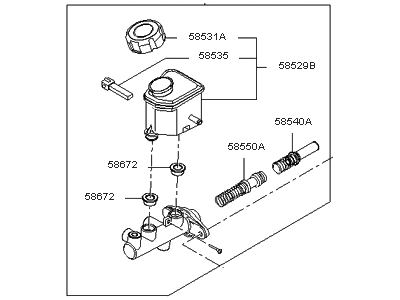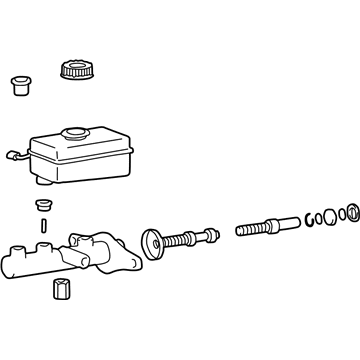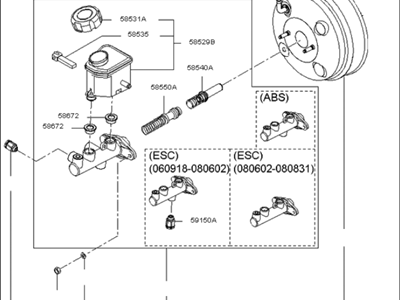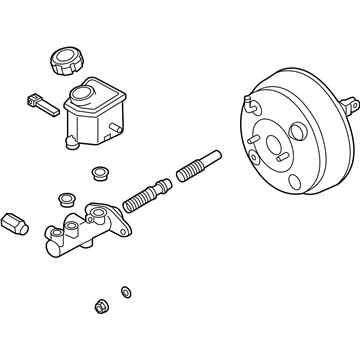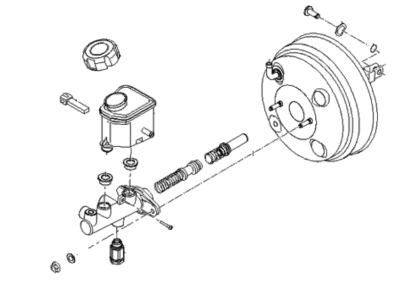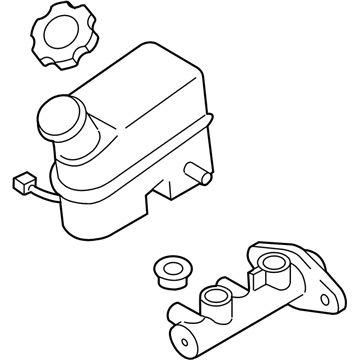×
- Hello
- Login or Register
- Quick Links
- Live Chat
- Track Order
- Parts Availability
- RMA
- Help Center
- Contact Us
- Shop for
- Kia Parts
- Kia Accessories

My Garage
My Account
Cart
Genuine Kia Optima Brake Master Cylinder
- Select Vehicle by Model
- Select Vehicle by VIN
Select Vehicle by Model
orMake
Model
Year
Select Vehicle by VIN
For the most accurate results, select vehicle by your VIN (Vehicle Identification Number).
25 Brake Master Cylinders found
Kia Optima Cylinder Assembly-Brake
Part Number: 585102T200$225.82 MSRP: $323.07You Save: $97.25 (31%)Ships in 1-3 Business DaysKia Optima Cylinder Assembly-Brake
Part Number: 585102G400$244.23 MSRP: $343.50You Save: $99.27 (29%)Ships in 1-3 Business DaysKia Optima Cylinder Assembly-Brake
Part Number: 585102G100$244.43 MSRP: $351.80You Save: $107.37 (31%)Ships in 1-3 Business DaysKia Optima Cylinder Assembly-Brake
Part Number: 585103D500$370.79 MSRP: $533.67You Save: $162.88 (31%)Ships in 1-3 Business DaysKia Optima Booster & Master Cylinder
Part Number: 585002G210$377.81 MSRP: $531.39You Save: $153.58 (29%)Ships in 1-3 Business DaysKia Optima Booster & Master Cylinder
Part Number: 585002G100$385.82 MSRP: $555.30You Save: $169.48 (31%)Ships in 1-3 Business DaysKia Optima Booster & Master Cylinder
Part Number: 585002G110$385.82 MSRP: $555.30You Save: $169.48 (31%)Ships in 1-3 Business DaysKia Optima Booster & Master Cylinder
Part Number: 585002G200$394.82 MSRP: $555.30You Save: $160.48 (29%)Ships in 1-3 Business DaysKia Optima Booster & Master Cylinder
Part Number: 585002G400$424.10 MSRP: $596.49You Save: $172.39 (29%)Ships in 1-3 Business DaysKia Optima Booster & Master
Part Number: 585002G410$428.29 MSRP: $602.39You Save: $174.10 (29%)Ships in 1-3 Business DaysKia Optima Booster & Master Cylinder
Part Number: 585002G300$430.36 MSRP: $619.40You Save: $189.04 (31%)Ships in 1-3 Business DaysKia Optima Booster & Master Cylinder
Part Number: 585002G310$430.36 MSRP: $619.40You Save: $189.04 (31%)Ships in 1-3 Business DaysKia Optima Cylinder Assembly-Brake
Part Number: 5851038304$474.52 MSRP: $696.80You Save: $222.28 (32%)Ships in 1-3 Business DaysKia Optima Cylinder Assembly-Brake Master
Part Number: 585102T100$231.83 MSRP: $321.99You Save: $90.16 (28%)Ships in 1-3 Business DaysKia Optima Cylinder Assembly-Brake
Part Number: 585102G110$232.02 MSRP: $331.94You Save: $99.92 (31%)Ships in 1-3 Business DaysKia Optima Cylinder Assembly-Brake
Part Number: 585102G000$244.43 MSRP: $351.80You Save: $107.37 (31%)Ships in 1-3 Business DaysKia Optima Cylinder Assembly-Brake
Part Number: 585102G010$248.10 MSRP: $357.09You Save: $108.99 (31%)Ships in 1-3 Business DaysKia Optima Cylinder Assembly-Brake
Part Number: 585102G200$244.43 MSRP: $351.80You Save: $107.37 (31%)Ships in 1-3 Business DaysKia Optima Cylinder Assembly-Brake
Part Number: 585102T280$233.65 MSRP: $336.29You Save: $102.64 (31%)
| Page 1 of 2 |Next >
1-20 of 25 Results
Kia Optima Brake Master Cylinder
If you're in search of top-notch, reasonably priced OEM Kia Optima Brake Master Cylinder, then you've found the perfect spot. Our website boasts an extensive inventory of Kia Optima Brake Master Cylinder, all priced at the market's premier price. Rest assured, every genuine part we offer comes with a warranty straight from the manufacturer.
Kia Optima Brake Master Cylinder Parts Questions & Experts Answers
- Q: How do you remove and install a master cylinder on Kia Optima?A:Before removing the Brake Master Cylinder, it is advisable to cover all body parts to avoid the effects of brake fluid on paint or any other finished surface and wipe off any spillage with water. It can be started by taking out the air filter housing and the air intake duct and with a syringe pump, the fluid should be tried to be suctioned out from the reservoir. Remove the electrical connector for the brake fluid level warning switch, put rags at the fittings, and have caps or plastic for the ends for each line that will be disconnected. Open the Brake Line connections to the Brake Master Cylinder by slightly loosening the brake line end fittings with a flare-nut wrench you choose to avoid rounded flats. Gently pull off the brake lines and cap the opposite ends to avoid any possibility of fouling of the lines. Before disconnecting, take out the nuts which connect the Brake Master Cylinder to the power booster and be careful not to over-turn and twist the brake lines and of course, avoid spilling the fluid. If this is not possible, then cut or un-bolt the brake lines running to the ABS actuator if they cannot be located out of the way. To install the new Brake Master Cylinder, the latter should be bench bled first: put the Brake Master Cylinder in the vise and connect the bleeder tubes to the outlet ports. Pour the recommended brake fluid into the reservoir and gradually depress the pistons into the Brake Master Cylinder to em prejudice the air into the reservoir doing this until no air bubbles are observed at all. At this point, detach the bleed tubes and plug the open ports, and then place the reservoir cover on followed by placing the Brake Master Cylinder over the studs on the power brake booster and tightening the nuts until only with your fingers. Insert the brake line fittings into the Brake Master Cylinder being careful not to damage the threads on the nipple, and tighten the mounting nuts and brake line fittings tightly. Add fluid to the Brake Master Cylinder reservoir and then evacuate the Brake Master Cylinder and the brake system with an assistant exerting steady pressure on the brake pedal and loose the fitting nut to let out air and fluid. Even if brake lines between the Brake Master Cylinder and the ABS actuator are removed, bleed the brake line at the ABS control unit. Last of all, the rest of the installation is done in the reverse sequence to the removal process, and it is essential to carry out brake system operations with all caution before regular use. If there are doubts over the brake system efficiency or if the brake pedal has a spongy feel after bleeding, it is advisable to consult a mechanic due to the hydraulic control unit for the models that come with ABS.
Related Kia Optima Parts
Browse by Year
2020 Brake Master Cylinder 2019 Brake Master Cylinder 2018 Brake Master Cylinder 2017 Brake Master Cylinder 2016 Brake Master Cylinder 2015 Brake Master Cylinder 2014 Brake Master Cylinder 2013 Brake Master Cylinder 2012 Brake Master Cylinder 2011 Brake Master Cylinder 2010 Brake Master Cylinder 2009 Brake Master Cylinder 2008 Brake Master Cylinder 2007 Brake Master Cylinder 2006 Brake Master Cylinder 2005 Brake Master Cylinder 2004 Brake Master Cylinder 2003 Brake Master Cylinder 2002 Brake Master Cylinder 2001 Brake Master Cylinder 2000 Brake Master Cylinder


